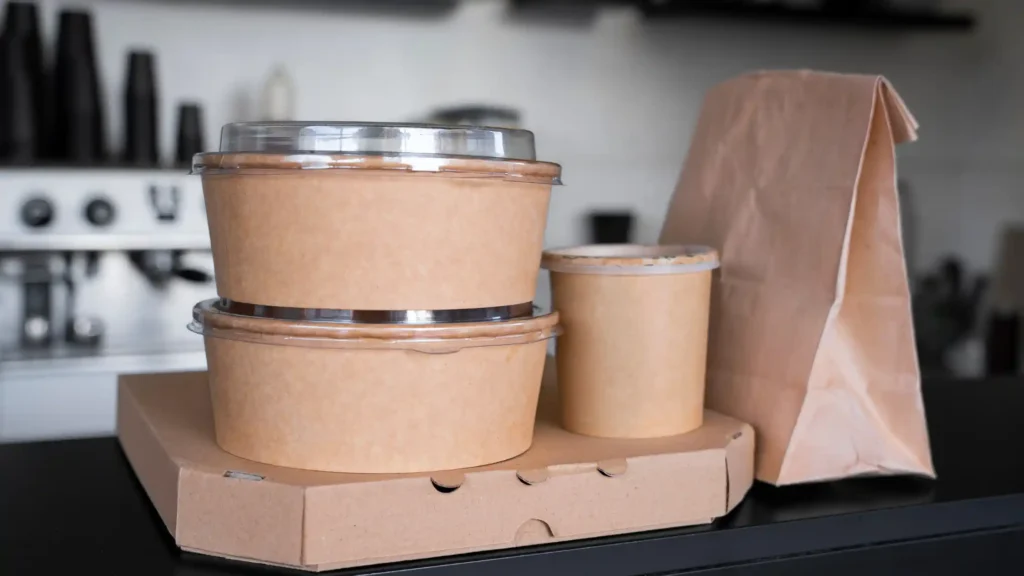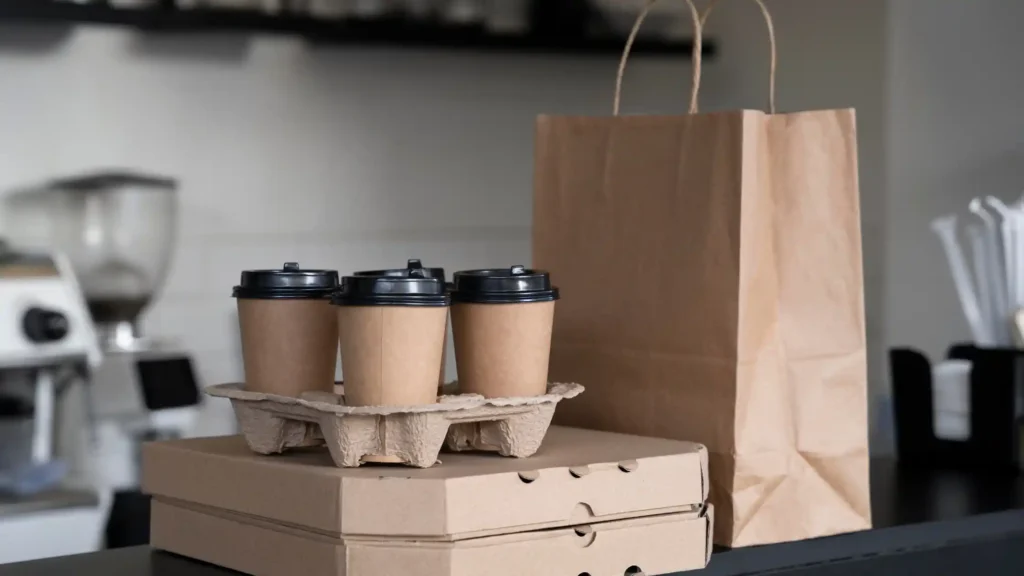Ever faced such a dilemma in receiving a product that arrived damaged in transit? Quite a universal discontent among customers and businesses, and that’s why protective packaging becomes a big deal. To brands, it’s not only about preventing losses during delivery but also about building and maintaining trust with customers.
In today’s competitive market, businesses are increasingly leaning towards eco-friendly food packaging and sustainable packaging solutions to align with environmental targets. Technologies like smart packaging technology and custom-branded packaging have also carved their niche in the packaging industry, offering both functionality and brand visibility.
Finding the right packaging partner, however, can be challenging. That’s where Maker’s Row comes in. As a trusted platform, Maker’s Row connects brands with reliable manufacturers specializing in protective packaging, eco-friendly food packaging, and flexible packaging for e-commerce. Whether you’re a startup or an established brand, Maker’s Row simplifies the sourcing process, ensuring your products are packaged securely and sustainably.
This blog will explore e-commerce packaging trends 2025, highlight lightweight protective packaging, and shed light on innovative materials reshaping the industry.

What is protective packaging, and why is it important?
Protective packaging can be defined as the materials and techniques that protect products during transportation, storage, and handling from shocks, moisture, and the effects of temperature climbing up.
Key Benefits of Protective Packaging:
- Prevents Product Damage: Ensures products reach customers intact.
- Reduces Returns and Refunds: minimizes financial losses due to damaged goods.
- Enhances Brand Reputation: satisfied customers are more likely to reorder.
- Eco-Friendly Practices: With solutions like eco-friendly food packaging, brands can minimize environmental harm.
Modern packaging isn’t just about protection—it’s about aligning with customer values, especially as sustainability becomes a growing concern.
Top Trends in Protective Packaging for 2025
The packaging industry is evolving rapidly, driven by environmental concerns, technological advancements, and changing consumer expectations. Brands that want to stay competitive must adapt to these trends and incorporate innovative solutions into their packaging strategies. Below are the top trends shaping the future of protective packaging and how they’re transforming the logistics and e-commerce sectors.
1. Sustainable Packaging Solutions
Eco-consciousness is rapidly transforming the packaging sector: the environment, science and technology, and, of course, a human concern for their need. To stay alive within the competition, brands must keep abreast and keep creative and innovative solutions in their packaging strategies. Below are the trends that will shape the future of protective packaging and change logistics and e-commerce as we know them.
- Biodegradable Materials: Many companies are replacing traditional plastic packaging with biodegradable alternatives made from cornstarch, mushroom mycelium, and seaweed.
- Recyclable Packaging: Companies now encourage customers to recycle the packaging after usage, with clear disposal routes.
- Minimalist Packaging Solutions: Excessive overdoing has been replaced by minimalistic designs, with lesser resource usage contributing to the same protection.
Example: Dell Technologies uses mushroom-based packaging for some of its products, ensuring that the packaging decomposes naturally without harming the environment.
Why it matters: Sustainable solutions not only help the environment but also appeal to conscious consumers, preferring brands that incorporate strong sustainability practices.
2. Smart Packaging Technology
Smart Packaging Technology The future of shipping, tracking, and delivering products is the integration of technology in packaging solutions. Smart packaging technology is not just a convenience; it relates to the openness, safety, and satisfaction of the customer as well.
- QR Codes: Scan the codes to get product details, verify product authenticity, and get real-time updates on delivery.
- Radio-frequency identification: Effectively track inventory and shipments by using RFID tags. In order to avoid losing or misplacing packages, less risk is presented.
- Temperature Sensors: Smart sensors will monitor temperature changes during transit, and they will notify any breaking of certain conditions in perishable products.
Example: Nestlé uses smart packaging with QR codes that allow customers to trace the origin of their products and access nutritional information instantly.
Why it matters: Trust, traceability, and reducing the chances of error in logistics are built by smart packaging.
3. Custom Branded Packaging
Packaging nowadays has become more than just a protective shell; it has become part of the identity of a brand. Custom-branded packaging achieves all of this by ensuring memorable unboxing experiences and reinforcement of brand recall.
- A personal touch: A handwritten note or perhaps a personal sticker can offer customers something extra for their money and make them feel valued.
- Eco-Friendly Branded Boxes: Eco-friendly food packaging combined with custom designs has put together sustainability goals with brands.
- Enhanced aesthetics: Beautifully crafted and attractive designs are perfect for sharing on social media, which will generate the power of organic marketing.
Example: Apple’s minimalist yet premium packaging communicates luxury and quality without even opening the box.
Why it matters: Memorable unboxing experiences are what build loyalty among customers in this day and age and create opportunities for organic word-of-mouth advertising.
4. Lightweight Protective Packaging
Reducing shipping costs without compromising product safety is a major goal for many businesses. Lightweight protective packaging helps achieve this balance effectively.
- Advanced Foam Materials: These provide excellent protection while being significantly lighter than traditional alternatives.
- Air Pillows and Bubble Wrap: Inflatable air cushions reduce material usage while keeping products secure during transit.
- Honeycomb Cardboard: This innovative material offers strength and cushioning while being lighter than traditional cardboard.
Example: Amazon has adopted lightweight packaging solutions for its smaller shipments, cutting down transportation costs and carbon emissions.
Why it matters: Lightweight packaging reduces shipping costs, fuel consumption, and overall environmental impact, making it a win-win for brands and the planet.

5. Flexible Packaging for E-commerce
The packaging nowadays has really changed along with the demand for flexible packing specifically for e-commerce. This is a type of packaging that is very adaptable to the form and size of the product while being helpful in protecting and optimally using it.
- Flexibility: Flexible materials can be moulded into the shape of the product with nearly no excess packing, thus minimizing wastage of material.
- Saving Space: Very little space can be consumed for these flexible types of packaging as compared to the whole package weight, giving scope for easier storage and transport.
- Material Saving: Material saving actually solves waste problems as it is proportional to less waste and hence matches with the sustainability goals.
Example: Nike uses flexible packaging pouches for many of their online orders, allowing the package to adjust perfectly to the product’s shape.
Why it matters: Increased efficiency in logistics, accompanied by decreasing waste, will hence bring about the accomplishment of these two goals of the brands: sustainability and cost savings—all under one roof.
How Maker’s Row Can Help with Protective Packaging Solutions
When finding the right protective packaging for your brand, then it can be quite an ordeal. Meanwhile, stepping into the world of Maker’s Row is a trusted partner.
Maker’s Row is a platform showcasing and connecting businesses with first-class packaging producers in the USA. Whether you are a startup that needs some branded, customized packaging or you are an already existing brand in need of eco-friendly food packaging, sourcing goes easier with Maker’s Row.
How to Choose the Right Protective Packaging for Your Brand
Selecting the right packaging depends on your product type, shipping method, and customer expectations.
| Factor | Recommendation |
| Fragile Items | Bubble wrap, foam inserts |
| Food Products | Eco-friendly food packaging |
| Electronics | Anti-static protective materials |
| Branding Focus | Custom-branded packaging |
| Cost-Efficiency | Lightweight protective packaging |
By aligning your packaging choices with these factors, you can ensure safe deliveries and reduce unnecessary costs.
Real-Life Example: Sustainable Packaging in Action
Brand Example: XYZ Organic Foods
The XYZ Organic Foods brand has gone ahead to adopt eco-friendly food packaging by adopting biodegradable materials. It has now been found that this hereby resulted in a reduction of the footprint uses by nearly 25 % and improved user input to their sustainability activity.
Result: A 15% increase in repeat customers and a significant drop in damaged goods complaints.
Future of Protective Packaging
Looking into the possibilities, e-commerce packaging trends 2025 could be indicative of advanced reliance on newer protective materials and smarter packaging designs. Also, making investments in reusable e-commerce packaging and enticing customers to return the packaging materials will gain momentum among businesses in the near future.
Brands are enabled with the latest smart packaging technology to track the delivery in real-time and ensure every package delivered conforms to safety standards.
Conclusion: The Importance of Getting It Right
Today, in this highly competitive market, protective packaging is not really an option but actually a necessity. There is only a solution—either sustainable or a gourmet food package or custom branded packaging—that businesses must observe and apply to protect their products and meet environmental targets.
With strategic means such as sustainable packaging solutions, lightweight protective packaging, and information with considerations on e-commerce packaging trends 2025, your brand will stand out in the market.
Now invest in smart packaging—robust, safe, and greener—for a win-win future for your brand and your customer.
By leveraging Maker’s Row, your brand can confidently invest in protective packaging solutions that are innovative, cost-effective, and environmentally friendly.
Maker’s Row isn’t just a platform—it’s your partner in building a stronger, more sustainable supply chain.
Start your journey towards smarter, safer, and greener packaging solutions with Maker’s Row today! 🚀
Looking for more insights? Check these out!
